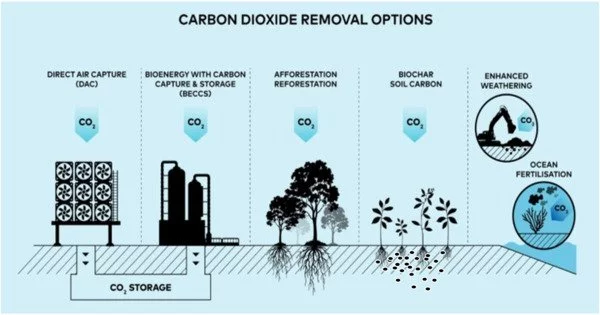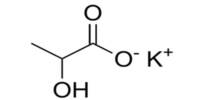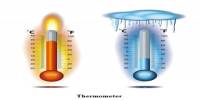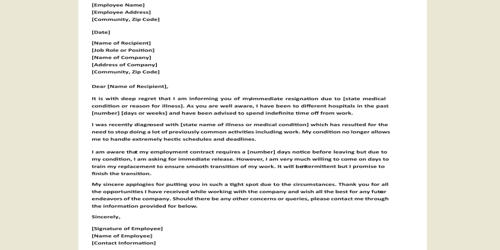Carbon Dioxide Removal (CDR) refers to a set of technologies and techniques aimed at removing carbon dioxide (CO2) from the atmosphere and sequestering it in a safe and permanent manner. This is a critical strategy for mitigating the impacts of climate change, as CO2 is the primary greenhouse gas responsible for global warming. CDR methods include:
- Direct Air Capture (DAC) – uses chemical processes to capture CO2 from the air.
- Bioenergy with Carbon Capture and Storage (BECCS) – involves growing crops, burning them for energy, and capturing the CO2 emissions before they enter the atmosphere.
- Enhanced Weathering – involves spreading crushed minerals that react with CO2 to form stable carbonates, which then get stored in the soil.
- Ocean Fertilization – involves adding nutrients to the ocean to stimulate the growth of phytoplankton, which absorb CO2 as they grow.
- Reforestation and Afforestation – involves planting trees and forests to absorb CO2 through photosynthesis.
Each method has its own advantages, disadvantages and limitations, and the most appropriate approach for a given context will depend on various factors such as cost, scalability, and environmental impact. CDR methods are still in the early stages of development and deployment, and their effectiveness and feasibility at large scale remains uncertain.

Afforestation, agricultural practices that sequester carbon in soils, bio-energy with carbon capture and storage, ocean fertilization, enhanced weathering, and direct air capture when combined with storage are all examples of CDR methods. A comprehensive life cycle analysis of the process must be performed to determine whether net negative emissions are achieved.
The US National Academies of Sciences, Engineering, and Medicine (NASEM) concluded in a 2019 consensus report that existing CDR methods at scales that can be safely and economically deployed have the potential to remove and sequester up to 10 gigatonnes of carbon dioxide per year. This would offset greenhouse gas emissions at about a fifth of the current rate of production.
Carbon Dioxide Removal (CDR), also known as negative emissions or carbon drawdown, aims to address the primary human source of climate change by permanently removing carbon dioxide from the atmosphere and storing it underground or beneath the ocean floor. CDR, if used on a global scale, could help prevent ocean acidification and slow the rate of global warming. CDR is not a substitute for rapid reductions in greenhouse gas emissions, which are required in any scenario.
















